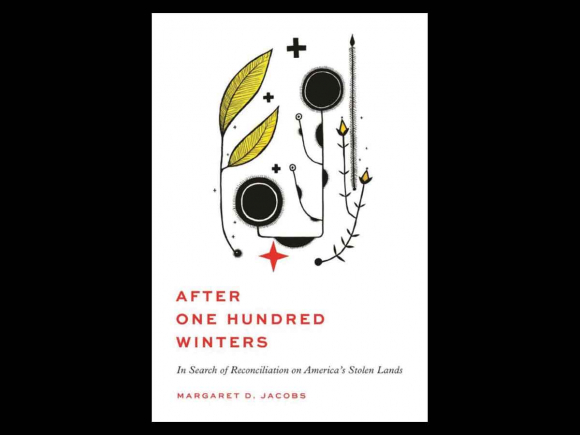Making peace with the past

I spent my boyhood living in Graham County in a community called Milltown in Robbinsville. In those days, there was still segregation amongst the white and Cherokee communities.
The BIA ran an “Indian School” over on Big Snowbird in their attempt to integrate Cherokee youth and their families into white American society. One of my good friends during those years was the son of the husband-and-wife team that ran the Indian School and so on weekends and holidays I spent much of my time over on the Snowbird Reservation with my friend David and his Cherokee friends.
During these informative years I learned a lot about tribal Native American culture and traditions and how my new Cherokee friends were being treated and marginalized by the U.S. government. I would take this experience with me into my twenties and beyond with more personal experiences with people of Indigenous heritage and from scholarship of my own making. In the end, it became clear to me that the history of the interactions between white settlers, the U.S. government (et.al.) and all Indigenous peoples was one of outright hostilities, broken treaties and downright genocide. These are issues that are still being talked about, written about and debated even now, more than one 150 years later.
In her new book “After One Hundred Winters” (Princeton University Press, 2021), Margaret Jacobs, who is director of the Center for Great Plains Studies at the University of Nebraska, takes us on a personal journey into Indian Country as we visit several Indigenous nations, experience their current lives first-hand and what is being done by certain individuals and groups in their “Search for Reconciliation on America’s Stolen Lands” as the book’s subtitle says. Jacobs starts her journey and takes us with her to north-central Nebraska to a tribal gathering of families from the Ponca, Omahas, Winnebagos and Santee Sioux — giving us personal perspectives into the past and current tribal histories for these peoples, much of which is unknown to mainstream Americans. Jacob writes: “In 2019 a New York Times writer dubbed it ‘Opening the West.’ But what happened to the Poncas, and other American Indian nations, was theft.”
After this introduction, Jacobs takes us on an historic journey tracing the various crimes committed against sovereign Indian nations; the founding of reconciliation movements across the country early on; the search for reconciliation in the twenty-first century; and an update on what is going on today — “revealing how much we have to gain by learning from our history instead of denying it.” These stories of dispossession are a harsh truth, but Jacobs in “After One Hundred Winters” courageously traces the brutal legacy of systemic racial injustice to Indigenous people that has endured since the nation’s founding. She explains how early attempts at reconciliation succeeded only in robbing tribal nations of their land and forcing their children into abusive boarding schools.
In a reunion in Genoa, Nebraska, she recalls that “some Genoa Boarding School alumni recounted deep loneliness as they labored under a strict military-style regime. They spoke of the anguish of losing their languages and familial connections.” Jacobs goes on to state: “Genoa was but one of more than 150 federal Indian boarding schools that operated from the late nineteenth century well into the twentieth.” In her personal and intimate text, Jacobs urges us to “face our past and learn from it, and once we have done so, to redress past abuses.”
Related Items
After several chapters detailing the unfortunate history of our nation’s relations and dealings with First Nations peoples, she moves into the more positive narrative that deals with what has and what is being done to make amends for past injustices. Indigenous survivors of child removal and their descendants are not waiting for the U.S. government to hold a formal truth and reconciliation process like the one that occurred in South Africa at the end of Apartheid. Telling the story of White Hawk, who was originally from the Rosebud Sioux Reservation and taken from her family when she was only 18 months old, Jacobs tells us that White Hawk has gone on to organize the Truth Healing Reconciliation Community Forums program. “At each forum displaced adults are invited to sit in a Talking Circle and share their experiences with social workers, mental health professionals, adoption workers and community members — providing a therapeutic and spiritual healing of the inter-federational disenfranchised grief and trauma caused by the removal of Indigenous children to foster care and adoption.”
After many chapters and examples of injustices and tribal attempts at reconcilation, Jacobs ends her cross-continent journey on a hopeful note on a Ponca farm in Neigh, Nebraska, in the spring of 2019. She writes:
“About fifty people, both American Indians and settlers, showed up, sharing a potluck meal in a utility shed before heading out to the Ponca cornfield. Many of us piled onto a flatbed trailer, pulled by a tractor. We gathered in a circle near a row of cottonwood trees. A Ponca elder led a prayer. The circle of people then unfurled into a long line along the edge of a plowed field. A Ponca woman and her child came down the line with a bucket of scarlet corn kernels. Each of us took a handful, cradling them carefully in our palms. On the signal from the elder, each of us bent down, nested three seeds into three holes in the loose earth, and then stood again. After everyone had planted their seeds, the line took one step forward and repeated the process until all the corn was planted. A group would gather again in a few months to harvest the sacred corn.” Drawing on dozens of interviews, “After One Hundred Winters” reveals how Indigenous people and settlers in America today, despite their troubled history, are finding unexpected gifts in reconciliation.
(Thomas Crowe is a regular contributer to The Smoky Mountain News and author of the multi-award-winning non-fiction nature memoir “Zoro’s Field: My Life in the Appalachian Woods.”)









